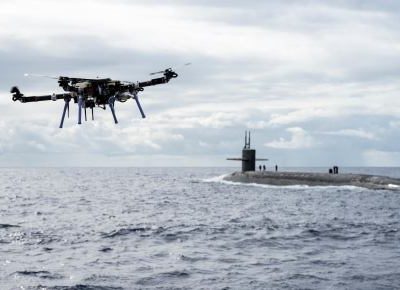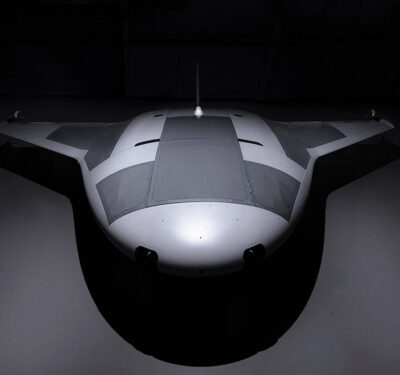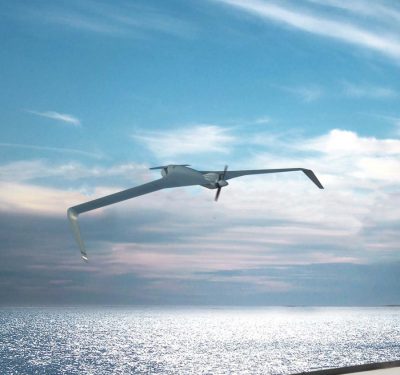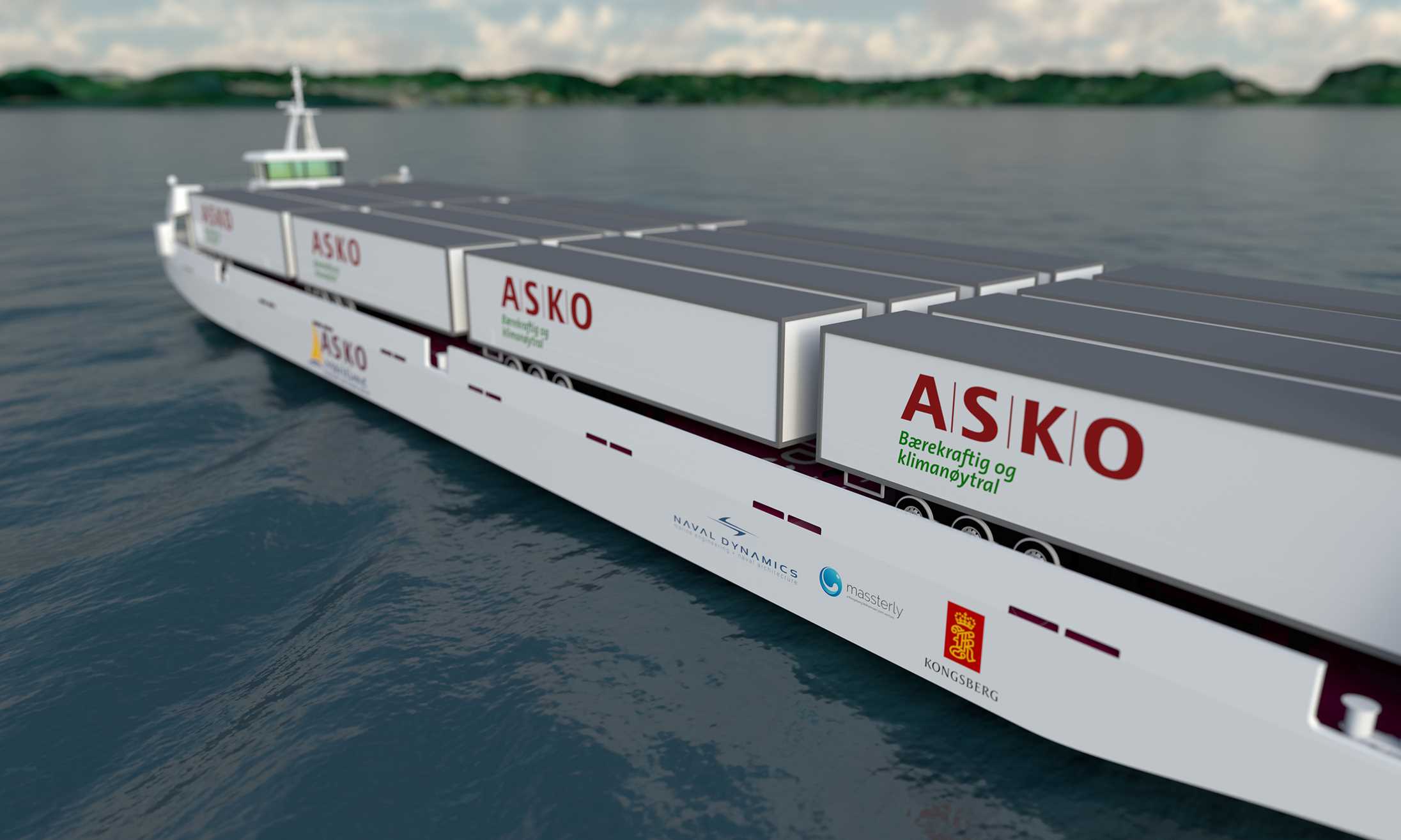
Autonomous barge carrying freight trailers, courtesy Kongsberg Maritime.
As freight movement constitutes a major source of carbon emissions, a pioneering project from Kongsberg Maritime partnered with ASKO, Norway’s largest grocery distributor, will employ two new autonomous electric barges to cross the Oslo fjord to deliver groceries. The sea drones can carry 16 trailers of cargo, each with a maximum capacity of 29 tons. Running 16 daily round trips that will each eliminate 258 kilometers of road trucking, this will reduce road travel by 2 million kilometers and cut carbon emissions by 5,000 tons annually.
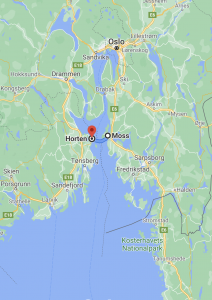
Horten-Moss autonomous ferry route, courtesy Google Maps.
The electric barges are now under construction in India, and are scheduled to begin fjord crossings in spring 2022, initially with a reduced crew. During a two-year test period they will train for fully unmanned operations by 2024. The goal is to reach 150 daily trailer crossings by 2030 with an expanded fleet. A ship master at a Remote Operations Centre will continue to oversee operations.
ASKO currently maintains a fleet of more than 700 trucks and trailers and aims to become carbon neutral in 2026. The company seeks to establish a fully electric transport chain with electric sea drones, terminal tractors and 50-ton trucks. ASKO has also ordered 75 electric distribution vehicles and charging stations for all its regional warehouses.
The company’s CEO Kai Just Olsen explained that “Trailers will be transported to and from the ports by electric trucks and port operation will be done using electric terminal tractors. There will be no trucks or drivers on the crossing – that way, they become more productive. The drivers won’t be loading trailers or spending time on sea crossings. At present, alternative transport routes involve driving around the Oslo fjord through the city, going through a tunnel or using a ferry connection. None of these contribute to less road traffic, fewer emissions or robust logistics.”
Olsen expects that the two-year test period will demonstrate that autonomous vessels can operate as safely as manned ones. Sensors will replace the eyes of the captain and a digital version of the crew will be created. Weather monitoring will be key to safe operations. Maritime broadband radio, a Kongsberg Maritime product, will be the dominant carrier. Wi-fi, 4G and eventually 5G will be deployed as the second carrier for data communications.
An onshore hydrodynamic and visual simulator is already in operation and is being used to verify the routes. This allows data collection before the vessel is built as well as providing the capability to test out its performance and discover just how much energy is required to propel it across the fjord. It also allows the virtual vessel to be subjected to different weather and traffic scenarios to see how it behaves, developing collision avoidance algorithms and building confidence.
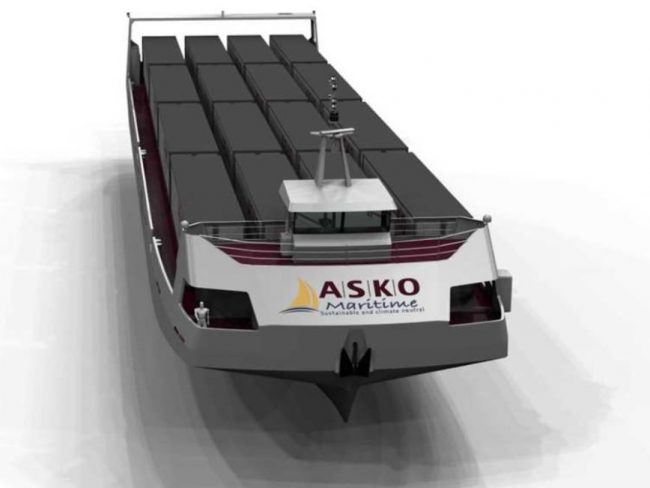
ASKO Unmanned Barge, courtesy ASKO/Kongsberg.
“We have emphasized developing a design that will be a standard for future vessels,” Olsen concluded. “For a longer range, hydrogen-electric can provide an operational alternative. We’re excited by the possibilities. Within a competitive transport chain, zero emissions are the goal and achievable.”


